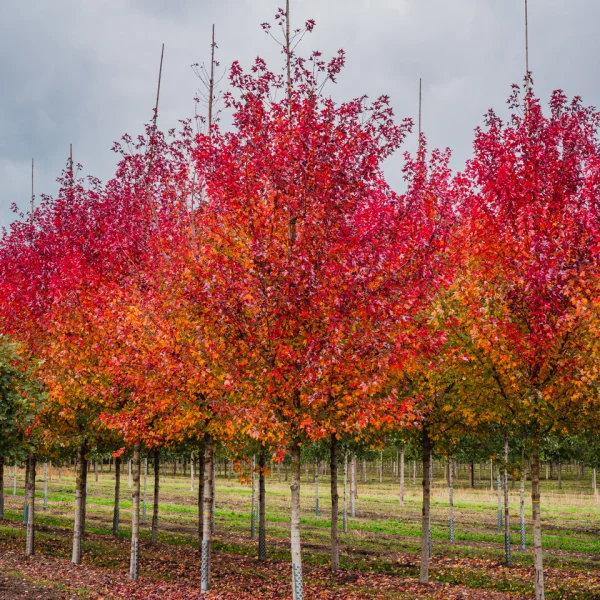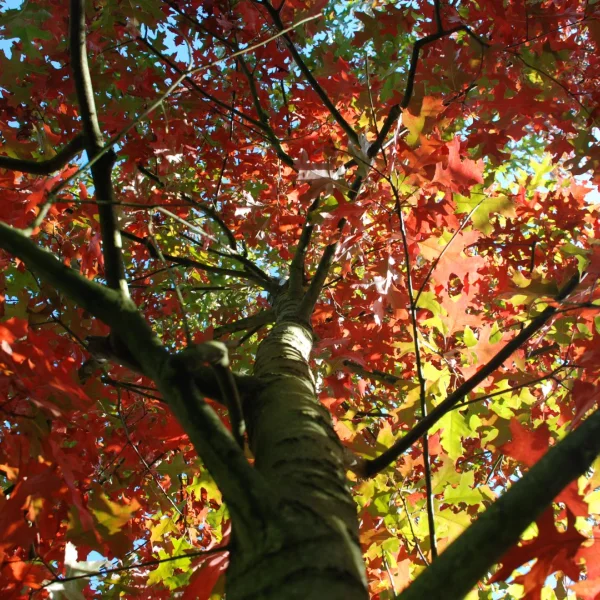Quercus alba – White oak, American white oak
Fagaceae
Quercus alba – White oak, American white oak
Stejarul alb este cel mai răspândit arbore din estul și centrul Statelor Unite, formând păduri mari. Este un arbore mare, cu o coroană inițial larg ovoidală, dar în cele din urmă rotunjită, cu o înălțime și o lățime de până la aproximativ 30 de metri. Scoarța de culoare maro deschis se desprinde în foițe plate. Pe măsură ce copacul îmbătrânește, trunchiul este din ce în ce mai adânc canelat. Frunzele sunt ovoidale alungite-reversate, cu o bază lungă în formă de pană. Cele 3 până la 6 perechi de lobi superficiali sau adânci sunt destul de înguste. Frunzele tinere sunt păroase, iar mai târziu sunt goale. În timpul verii, frunzele sunt ușor lucioase, de culoare verde închis pe partea superioară și de culoare verde-albastră și cu păr scurt pe partea inferioară. Toamna, se colorează de la portocaliu la roșu vin sau roșu-maroniu. Arborele crește relativ încet și are nevoie de mult spațiu. Este un important producător de lemn în Statele Unite. Crește în aproape orice tip de sol, cu condiția ca acesta să aibă rădăcini adânci, să fie umed și bine drenat.
Availability
Specifications
Download PDF
Height
20 - 30 m
Width
20-30m
Crown
round, dark, dense crown
Bark and branches
bark light grey-brown, flaking off in flat plates, later deeply grooved
Leaf
elongated-obovate, lobed, slightly glossy dark green, 10 - 20 cm
Autumn colour
yellow, orange, red
Flowers
yellow-green ♂ catkins, 5 - 10 cm, May
Fruits
elongated-oval, 1 - 2.5 cm, single or in pairs, cupule with warty scales
Spines/thorns
None
Toxicity
usually not toxic to people, (large) pets and livestock
Soil type
any, provided deeply penetrable by roots, moist and well drained
Paving
tolerates no paving
Winter hardiness zone
5 (-28,8 to -23,4 °C)
Wind resistance
good
Other resistances
resistant to frost (WH 1 - 6), can withstand wind, resistant to de-icing salt
Application
avenues and broad streets, industrial areas
Shape
clearstem tree, feathered tree, multi-stem treem
Origin
Eastern and central USA, Northeast Canada
Possibly of interest
Frequently asked questions
Quercus alba
Quercus alba can eventually reach a height of 20 - 30 m, depending on the site and climate conditions.
Quercus alba has a average growing and can eventually reach a height of 20 - 30 m, depending on the site and climate conditions.
The leaves of Quercus alba turn yellow, orange, red in autumn.
The right time to plant Quercus alba is during the dormancy period. In Western Europe, Quercus alba with root balls can generally be planted from mid-November to late April, although this depends strongly on the climatic conditions and the species of tree.
may.
General
 English
English
 English (United Kingdom)
English (United Kingdom)
 Nederlands
Nederlands
 Nederlands (België)
Nederlands (België)
 Deutsch
Deutsch
 français
français
 čeština
čeština
 polski
polski
 español
español
 română
română
 dansk
dansk
 svenska
svenska
 magyar
magyar
 Türkçe
Türkçe
 slovenčina
slovenčina
 русский
русский
 norsk
norsk









